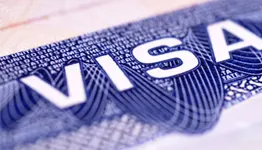We're moving! This site will be relocating to goingto.university in 2026. Please update your bookmarks to the new address.


The United States of America continues to be a favourite study destination for international students from all over the globe. Every year, more than a million international students are enrolled in one of America’s universities and colleges, including the 350 USA universities ranked in the QS World Rankings.
With as many as ten cities ranked in the top 50 of the Economist magazine’s yearly Liveability Index, you have an endless list of cities and universities in America to choose from for your higher education journey.
The USA is well-known for its stunning natural beauty, high-tech cities, easily-available public transport options and world-leading infrastructure alongside its world renowned universities. Studying and living in America is a dream for many students worldwide, and the country is accepting more and more student visa applications from high-achieving students every year.
The process to apply for a USA student visa involves first confirming your enrollment at a university in the USA. After this, your selected university will enrol you in the US Government’s Student and Exchange Visitor Information System (SEVIS). Next, you will receive a document known as Form I-20 if you are eligible for an F1 or M1 visa, and a form known as DS-2019 if you are an international student eligible for a J1 visa.
Once you receive your relevant documents, you must access the US Government’s official SEVIS website and complete payment of the SEVIS fee at least three days before you submit your student visa application. Generally, the SEVIS fee is about 200$ for F1 and M1 student visa applications, and 180$ for J1 applications. Upon completing the DS-160 online student visa application form, you can select dates for a visa interview at your nearest US Embassy or Consulate.
F1 or M1 visas can be awarded up to 120 days before the start of your course, but you will not be allowed to enter the country more than 30 days before the course start date. J1 visas can be awarded at any time. Average waiting times for US student visas depend on your home country, and can take anywhere between just 3 days to up to 3 months. We suggest that you begin your student visa application as soon as you confirm enrollment at an American university.
Currently, the US Government provides three different types of student visas for international students, depending on your selected degree program and planned length of stay. These are:
USA embassies and consulates around the world require a different list of documents and identification papers from international students depending on your home country, and we recommend that you contact your nearest USA embassy if you require more details.
In the meantime, you should prepare multiple copies and the originals of the following documents because they are mandatory for all student visa applications to the USA, in addition to supporting financial records:
Current USA Government rules allow international students to work up to 20 hours per week during the semester, and up to 40 hours a week during semester breaks and holiday periods.
During the first year of your course, you will not be allowed to work off-campus. Most universities offer a large number of on-campus jobs, ranging from cafe and shop attendant roles to research assistants and writing positions in various departments.
From your second year onward, you can get off-campus employment, such as part-time internships in businesses in cities near your university. Many international students in the USA use online platforms to identify and apply for ideal part-time employment alongside world-class academic learning.
International students on F1 visas are eligible for up to 12 months of OPT (optional practical training) after graduation. This means you can work for a year after you finish your studies. If your selected degree program qualifies as a ‘Science, technology, engineering, and mathematics’ (STEM) course, you can work for up to three years after graduation in the USA. After this period ends, you will be required to apply for a work visa if you wish to continue working in the USA.
For further information about student visas, see our International Student Visas article.
See all universities in the USA.
Study in the USAJoin the StudyLink email list and never miss a chance to turn your study abroad dreams into reality!

Read our key advice article to help you make the best decision for your education and start your International study adventure.

In this article we look at how to approach choosing where in the world you would like to study.

Read StudyLink's suggestions on your first steps when deciding where to study abroad, with helpful tips to make your decision easier.

Find out more about English language tests, your options and what is required as an overseas student.

StudyLink.com take a detailed look into the costs of studying abroad and all the aspects that you should budget for when embarking on your studies.

We answer 10 common questions about applying for a student visa to help make your visa application quick and easy.

Find out more about international student visas for studying abroad, as well as how, where and when to apply for yours.

Find out more about funding and scholarships for international students, and what financial assistance might be available to you.

How to choose a course that fits you? Check our top tips on choosing which course is best for you to help you make an informed decision.
The latest articles from study abroad providers and StudyLink.com to hep you on your study abroad journey.
See more articles